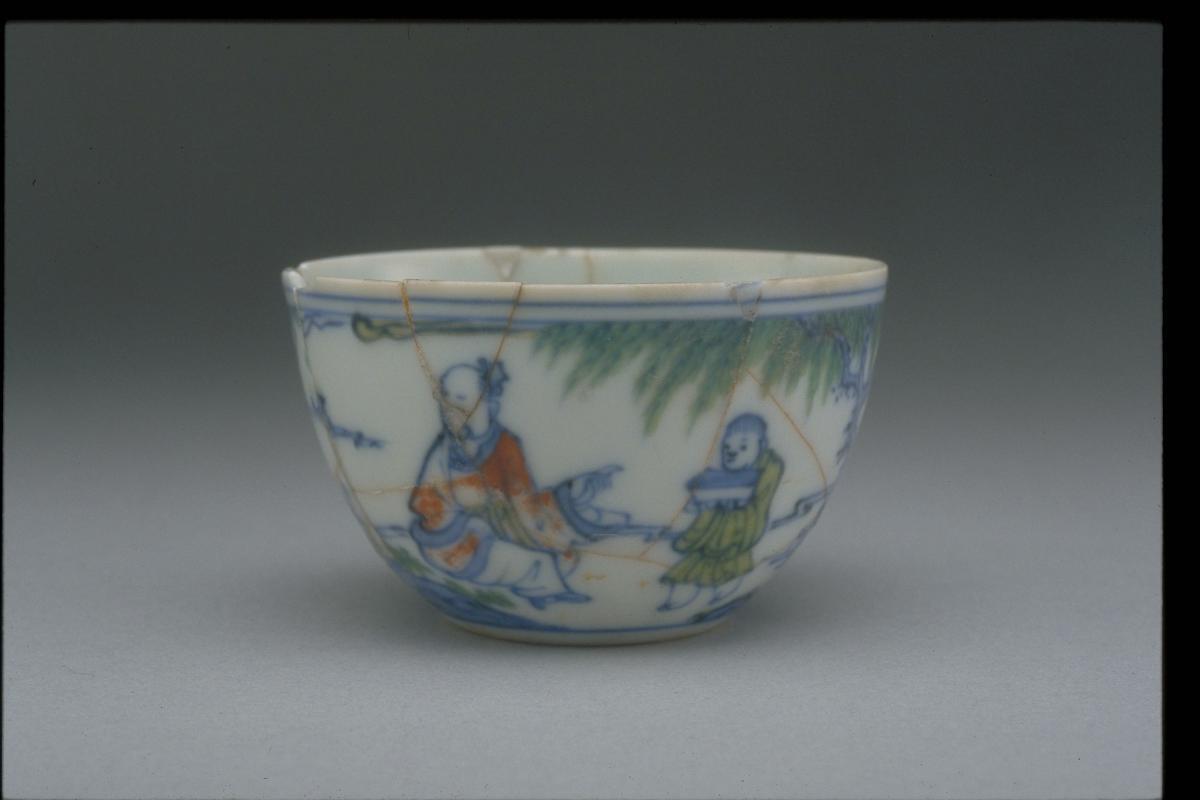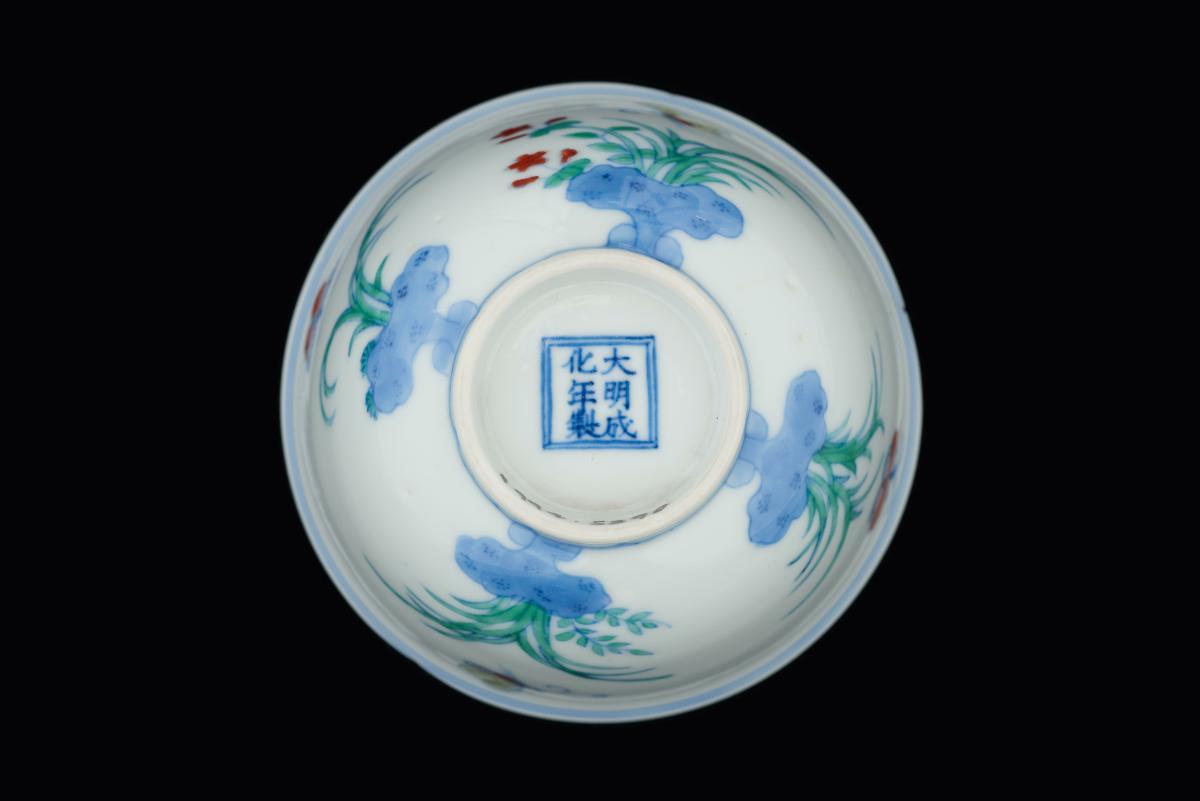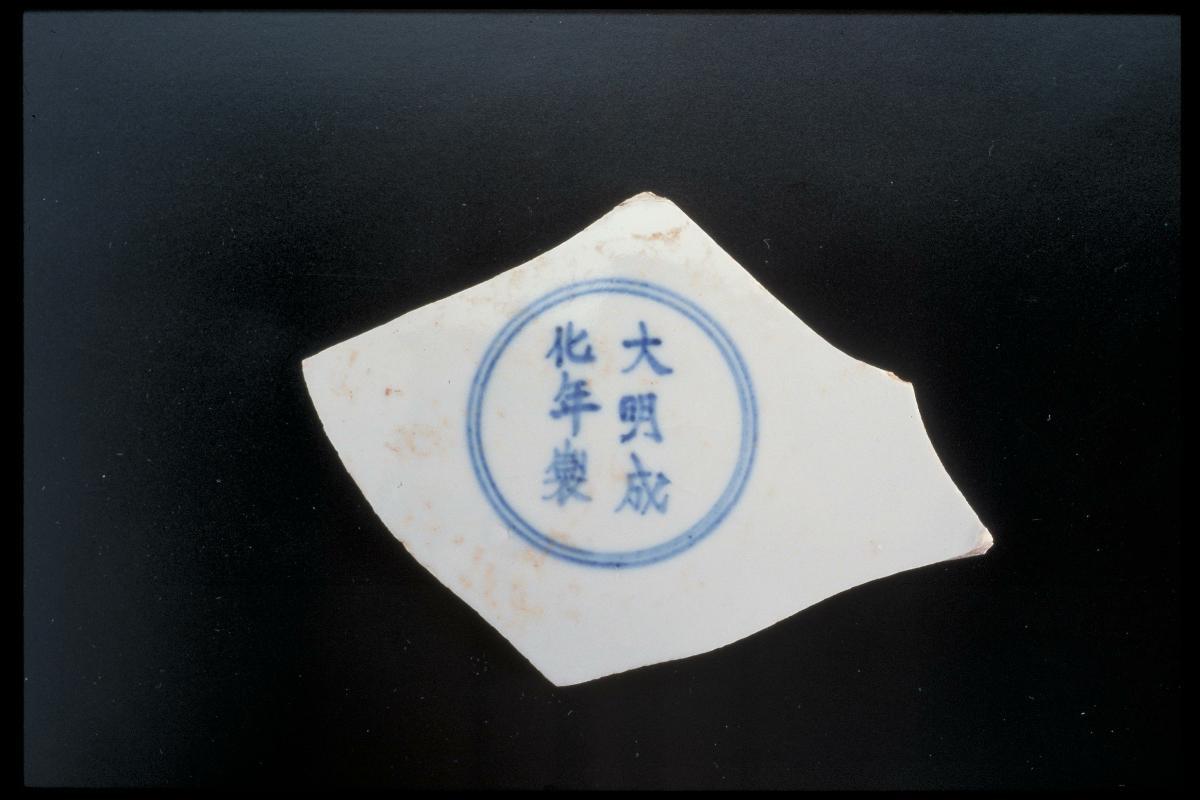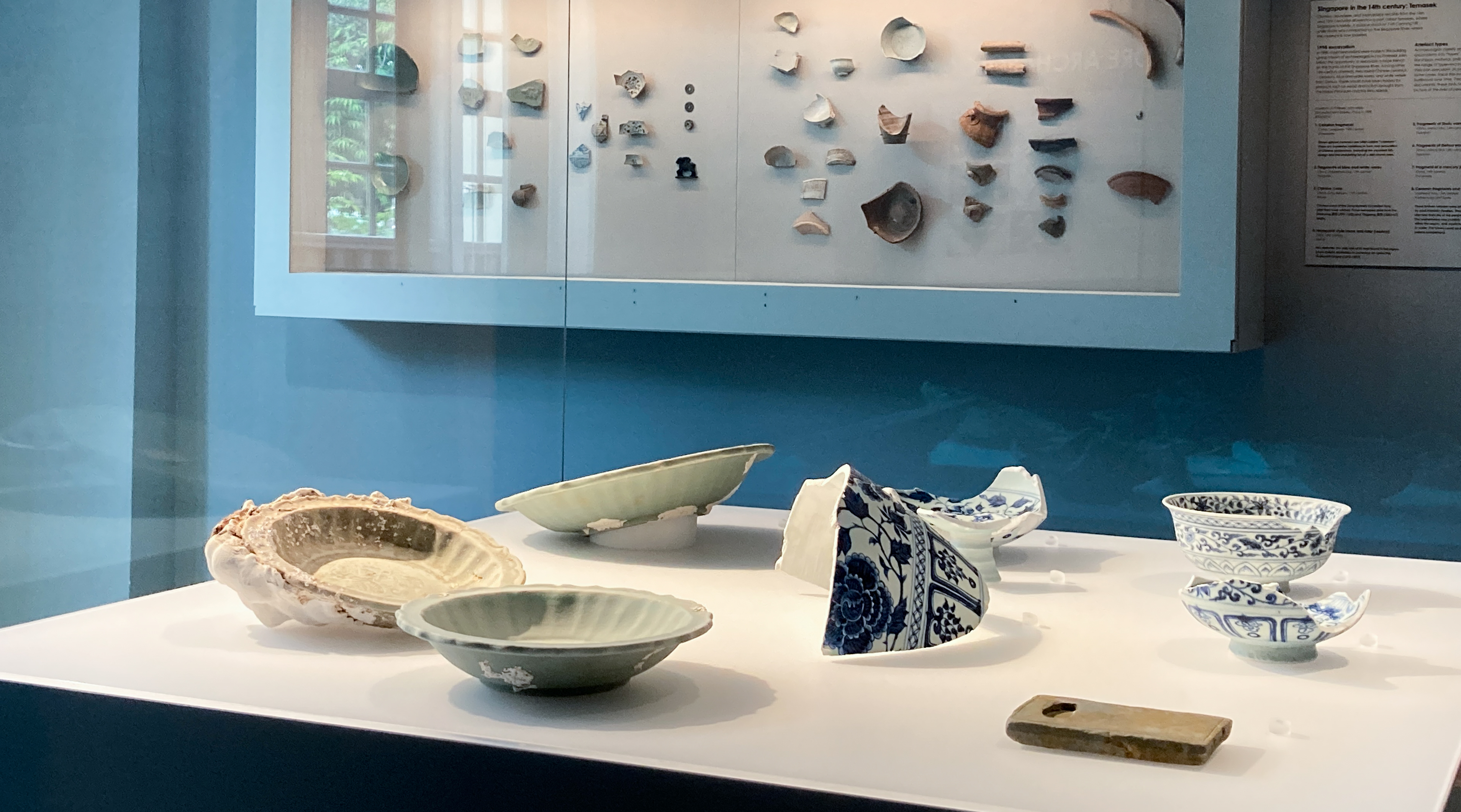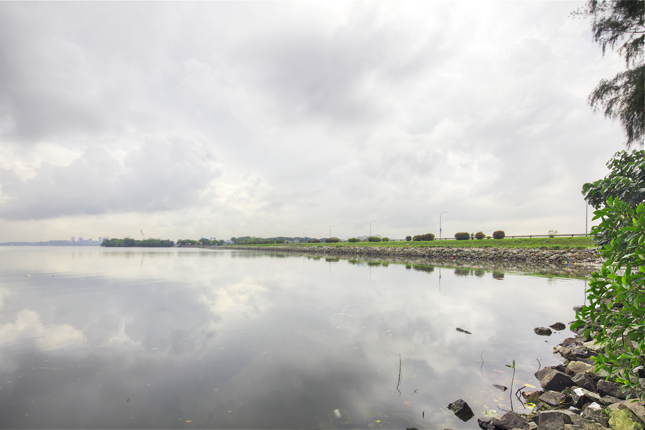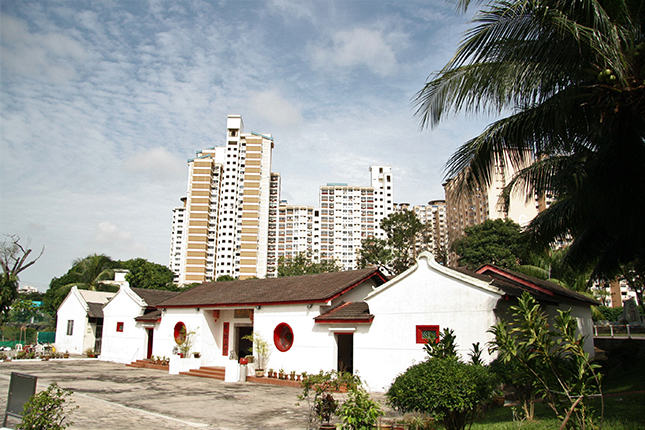This cup was reconstructed from shards found at the imperial kiln sites of Jingdezhen, China. It is one of the many examples of flawed ceramics from the Chenghua period, Ming dynasty. Such pieces fail to pass the strict quality controls of the imperial court and were broken, usually in the middle, to prevent them from being used or copied without permission. ‘Doucai’ (fitted colours) is used to describe porcelain that combines the practice of using cobalt blue as an outline and overglaze enamels to fill the spaces. The ware is then glazed and fired before being coloured in with overglaze enamels, in shades such as red, green, yellow and purplish brown. The painting on this period is regarded as one of the finest and was copied during the reigns of the Qing emperors, Kangxi (1662-1722) and Yongzheng (1723-1735).




